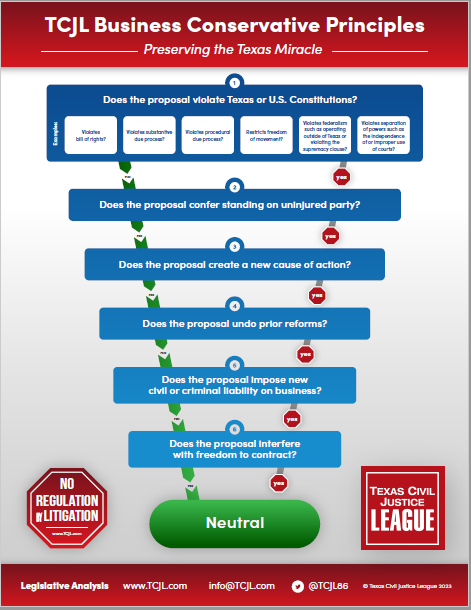 In a case with a long and fairly complicated procedural history, the Houston [1st] Court of Appeals has ruled in favor of an employer that invoked the exclusive remedy of worker’s compensation against a claim by a temporary employee who was injured on the employer’s worksite.
In a case with a long and fairly complicated procedural history, the Houston [1st] Court of Appeals has ruled in favor of an employer that invoked the exclusive remedy of worker’s compensation against a claim by a temporary employee who was injured on the employer’s worksite.
Bertoldo Balderas, As Next Friend of Recoverto Balderas v. Houston Foam Plastics, Inc. (No. 01-20-00755-CV) arose from injuries suffered by a temporary employee provided by the employer, Houston Foam Plastics, from a temporary employee leasing service. The agreement signed by the leasing service and the employer gave the service the election of worker’s compensation coverage under Chapter 93, Labor Code. The employer likewise carried worker’s compensation for its employees under Chapter 408. Though the agreement specified that the employee would be employed as a forklift operator, the employer assigned him to operate a plastic grinder. The employee was injured when a bag he was emptying into the grinder became caught, pulling him into the machinery. He suffered severe injuries that required him to have 24-hour care in a rehabilitation facility. His representative brought claims for negligence and gross negligence against the employer. He also filed a claim with Zurich, the employer’s carrier, which ended up going to an administrative hearing and on to a different district court for judicial review. Plaintiff repeatedly moved to abate the lawsuit while the administrative process was ongoing, but once judicial review determined that the employee was covered by the leasing service’s comp policy and, further, was intoxicated on the job, the employer moved to lift the abatement and for summary judgment on the basis of the exclusive remedy. The trial court granted both. Plaintiff appealed.
The court of appeals affirmed. First, the court held that the trial court erred in lifting the abatement in his suit against the employee because the issues in judicial review were “inextricably linked” to the employer’s exclusive remedy defense. However, while the appeal was pending, the Houston [14th] Court of Appeals affirmed the other trial court’s confirmation of the DWC appeals panel’s decision. Applying the doctrine of primary jurisdiction, the court of appeals held that it had no jurisdiction over plaintiff’s claim as to the abatement order, given that its sister court had spoken and plaintiff did not file a petition for review. Since “the judicial review case had reached its final resolution, an abatement pending resolution was no impossible.” The court of appeals thus dismissed plaintiff’s first issue for lack of jurisdiction.
Next, plaintiff complained that the trial court erred in granting summary judgment for the employer because the employer’s pleadings did not give plaintiff sufficient notice of the employer’s exclusive remedy defense and the trial court failed to consider plaintiff’s summary judgment evidence. The court of appeals brushed these arguments aside, finding plenty of notice in defendant’s pleading and overruling the sufficiency point because plaintiff failed to adequately brief it (we are amazed at how many appeals we see in which a party does not actually brief their argument!). As to plaintiff’s argument that defendant failed to meet its burden to prove that it was entitled to summary judgment as a matter of law, the court of appeals found the employer met its summary judgment burden by proving that it had workers’ compensation coverage under Chapter 408, that it controlled the manner and details of plaintiff’s work and thus plaintiff couild be considered the defendant’s direct employee on the date of the accident (an employee can have more than one employer under Chapter 408, providing that the direct employer controls the details of the leased employee’s work). Finally, the employer was not required to attach a copy of its worker’s compensation policy to the summary judgment motion; the affidavits of a human resources manager and a certificate of insurance was plenty.
While this decision doesn’t blaze any new trails, its procedural history makes it somewhat unique in that the plaintiff succeeded in keeping Houston Foam on the hook for five years (2015-2020) by convincing the trial court to continue abating the trial while the parallel administrative and judicial review process proceeded to determine whether plaintiff was a covered employee under the leasing service’s comp policy and whether he was intoxicated while operating the plastic grinder. When the TC finally lifted the abatement upon resolution of those issues, there was nothing for it but to dismiss plaintiff’s claims on the exclusive remedy defense. The problem with the extended abatement, at least from Houston Foam’s perspective, was that the stay prevented the company from developing its defense and getting the lawsuit off its books as soon as it could. This case does not exemplify the dilatory nature of the judicial system, but an attempt to get two bites at the apple on the comp coverage issue.












